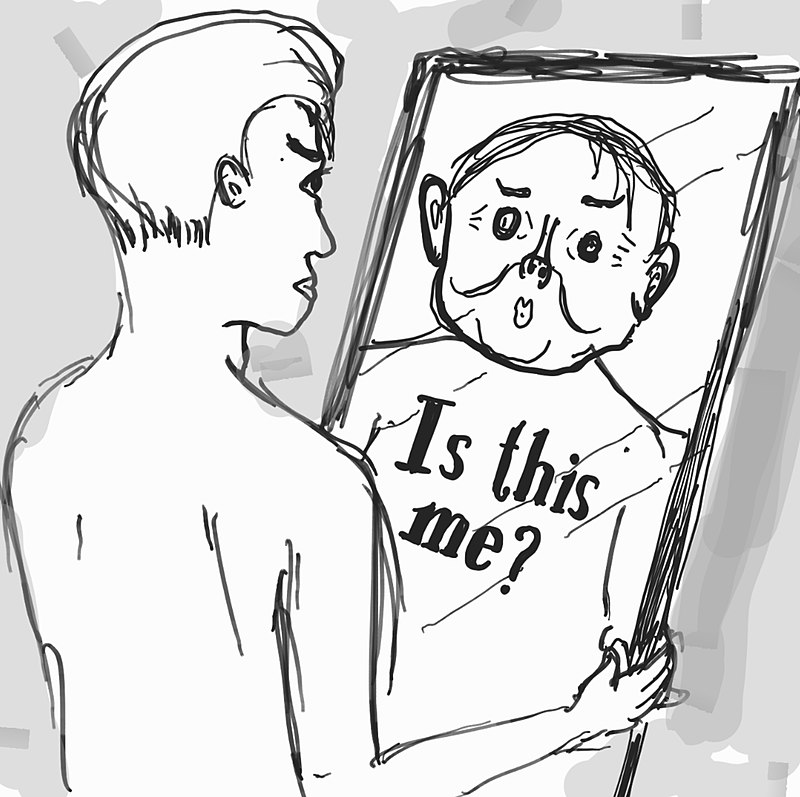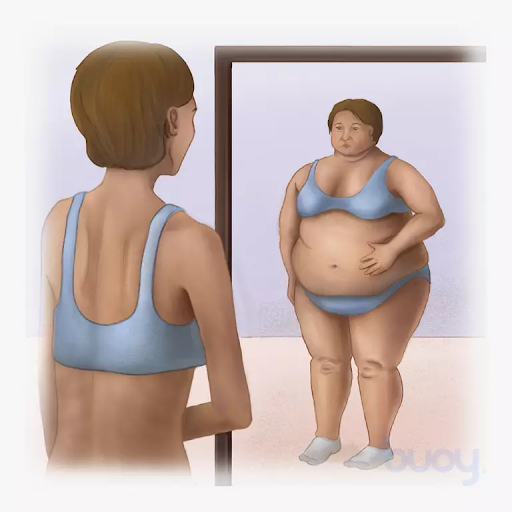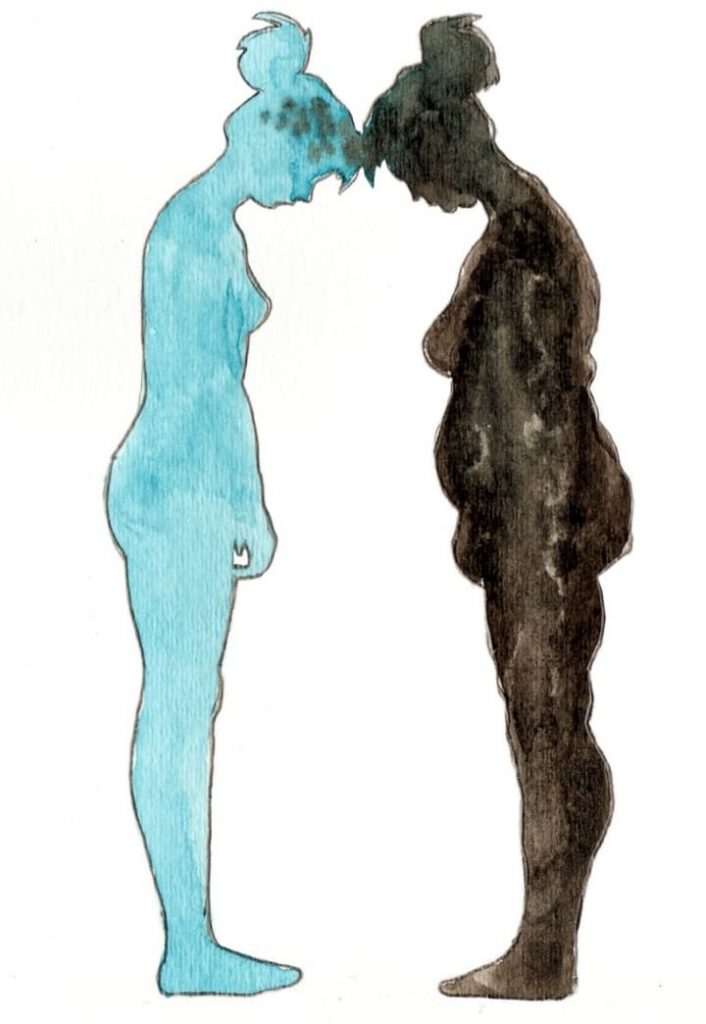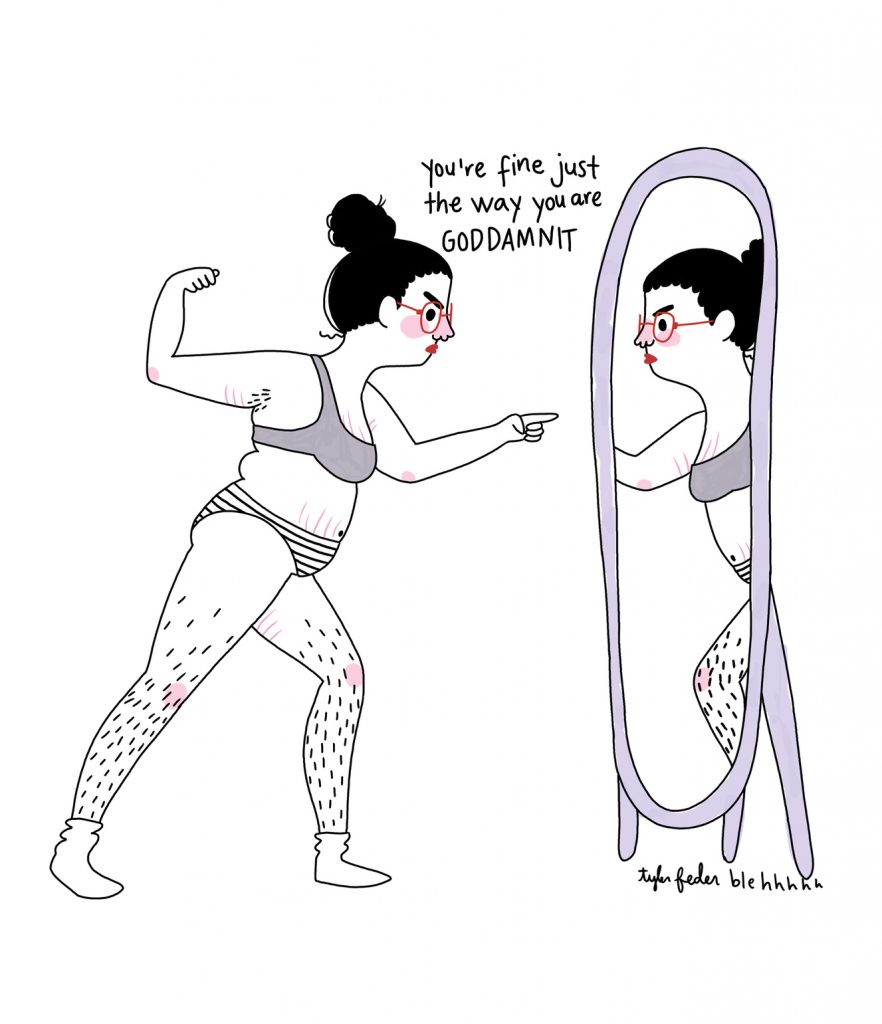
The Perfect Me : Battling With Body Dysmorphia
Body dysmorphia is a mental health issue. In this, one sees their minor flaws which may not be visible to others as huge and this gives rise to anxiety, a reason for not feeling confident even embarrassed of your own body.
Body dysmorphic disorder makes you avoid social situations. In this situation, you look in the mirror at yourself for hours and hours looking for flaws, grooming, or seeking reassurance for yourself, sometimes for many hours each day. This is seen usually in teenagers and people in early adulthood. People suffering through this might label themselves as ugly, experience traumatic and emotional behavior, and try to fix this through cosmetic and plastic surgery. The objective of this article is to make people aware of this problem and how common it is in today’s world.

Research and Symptoms of Body Dysmorphic Disorder
According to a study, Body Dysmorphic Disorder affects 1.7% to 2.9% of the general population— about 1 in 50 people and that women are more likely to have this disorder than men. The condition is common in teens, women, and people with a pre-existing psychiatric condition. Body dysmorphic disorder (BDD) is a serious mental health issue and needs attention. It is a minimal or imagined situation where you find issues in your body that might not be even real. BDD has high rates of suicidal thoughts and attempts of suicide.
Some symptoms include-
- Social anxiety
- Depression
- Calling yourself ugly
- Avoiding clicking pictures
- Looking again and again in the minor
- Comparing yourself to others
- Using excessive makeup
- Little or no satisfaction after plastic surgery
- Eating disorder
The areas a person suffering from Body Dysmorphic Disorder focuses are:-
- Hair thinning, baldness, texture and color
- Body parts- like breast shape or penis size
- Muscles and other fatty areas
- Face as in nose, complexion, wrinkles, acne, and other blemishes
How to prevent Body Dysmorphic Disorder
- Acknowledge – Acknowledge that you are going through body dysmorphia and know it is nothing to be ashamed of.
- Consult a doctor – Ask doctor for proper meditation and treatment to reduce body dysmorphia
- Take proper medication – Take the medicines prescribed by the doctor and try not to miss them.
- Avoiding triggering situations – When you feel that certain situations trigger your body dysmorphia, just move away from the situation.
- Channeling new thinking – Try meditation and spiritual guidance for body positivity to improve your thinking pattern.
- Learning new habits/skills – Pre-occupy your mind by learning new things. Be it a skill or a language or anything you like.

Body Dysmorphic Disorder and its effect on self-esteem
When we see models on social media we often compare our bodies to them without realizing that they upload their pictures by using photoshop and filters but we want our body like theirs, which leaves an impact of negative body image which can lead to BDD. We look for validations on social media for our perfect body which is unrealistic expectations for our body. We usually see this tendency in teenagers and when their expectations do not meet the perfect body image it leads to disorders and depression. By negative body image, we tend to lose our social skills and isolate ourselves from others. There are various types of causes for a negative self-image like gaining weight because of puberty, parents concerned with overweight children, social media expectations, etc. Instead of having a negative body image let’s have a positive body image.

Let us get the Positive Body Image
Having a positive body image means no more tolerating or tormenting your body instead only loving and accepting your body. Having a positive body image leads to happier and confident self-esteem.
To have a better positive body image try the following things-
- Eat healthy food
- Surround yourself with friends who love you for who you are
- Always lookout for the signs like are you looking for validation or reassurance from your family members or friends, and try to combat these signs
- Whenever you struggle with a body image, write it down and take a deep breath look in the mirror. And you’ll see you look perfect!
Parents also play an important role in a teenagers life, here is what parents can do to increase positive body image:-
- Be an example to your kids. Tell them your struggle as teenagers. Tell them to accept themselves for who they are.
- Stop comparing them with other kids. All kids are different and unique and are different shapes and sizes and it is okay to be you.
- Consult a doctor and make them do activities that increase their self-esteem.
- Promote physical activity and healthy eating habits.
- Teach teenagers that your body is a temple and it deserves respect as much as you do.
- And lastly, teach your kids to love and accept their bodies.
Conclusion
Body Dysmorphic Disorder is treatable. Treatment for body dysmorphic disorder often includes a combination of cognitive-behavioral therapy and medications. The objective of it is to reduce the effect of the disorder to live a normal and healthy life. There is nothing to be ashamed of or feel threatened by it. Embrace your body the way it is and feel good about it.
Edited by: Vaishnavi
Author


1 thought on “The Perfect Me : Battling With Body Dysmorphia”
Very nice article, exactly what I needed. Very useful post I really appreciate thanks for sharing such a nice post. Thanks